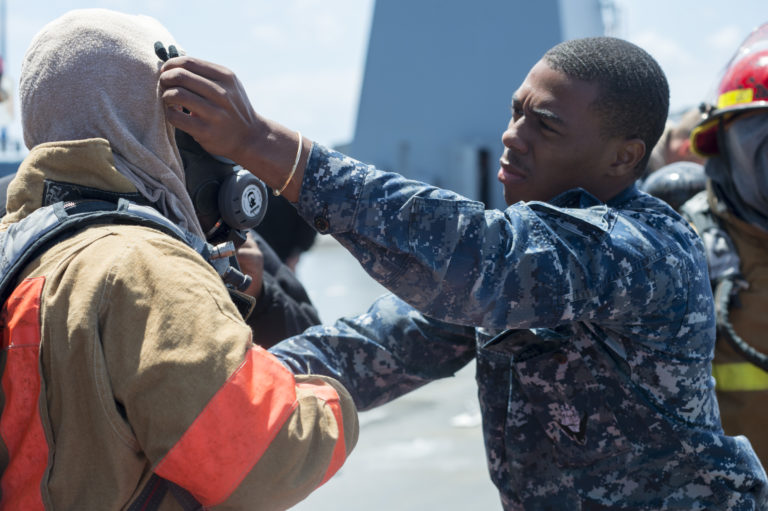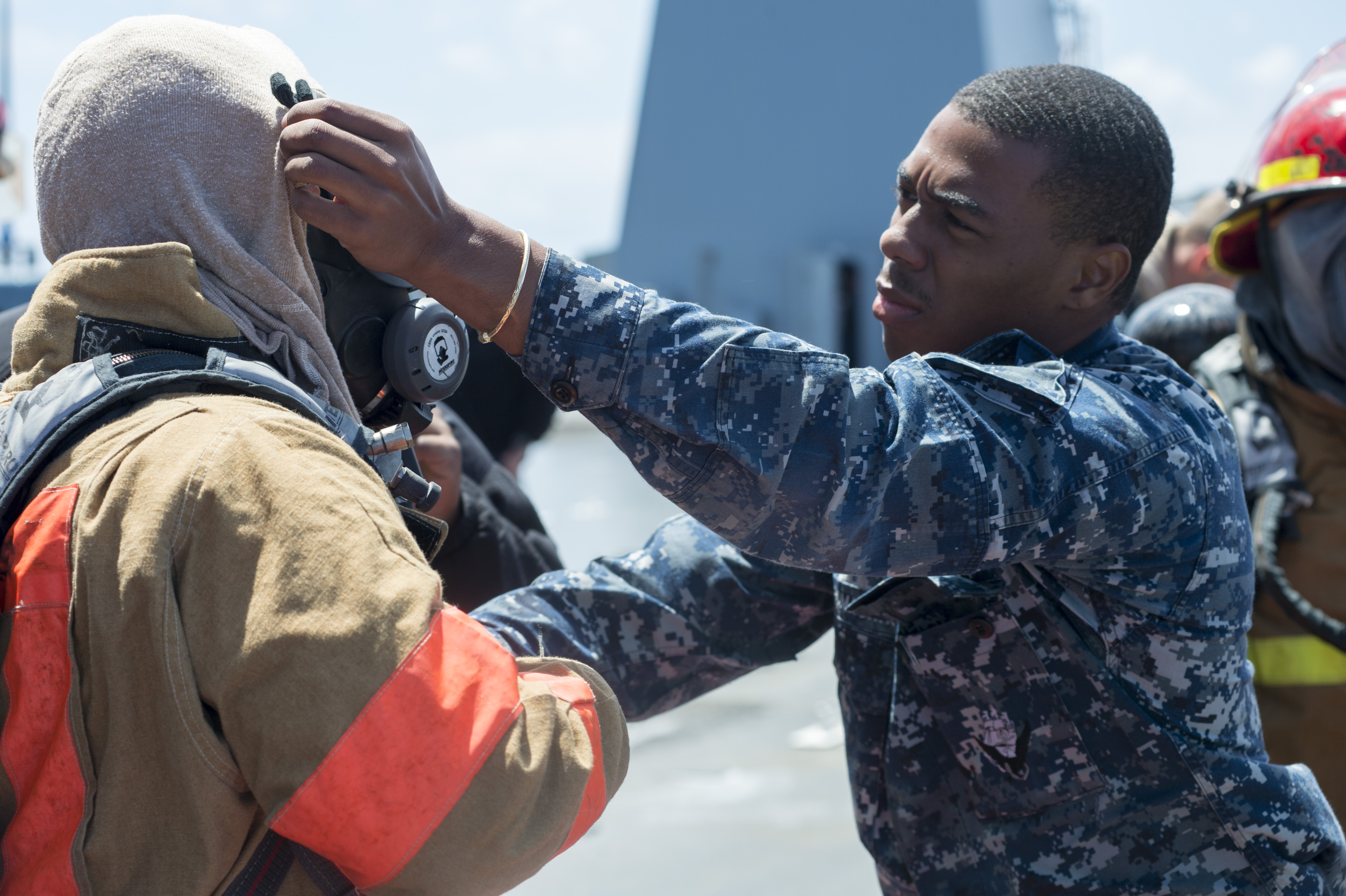

A critical form of communication is the High Frequency Radio Group (HFRG), and one of the technicians who works on the HFRG is Electricians Technician 3rd Class Sigui M. Howard-Magras.
Howard-Magras, 22, was born on Saint Thomas in the Virgin Islands to Walt Magras and Carla Howard. He joined the U.S. Navy as an electrician’s technician in December 2010. After graduation from boot camp and “A” school in Great Lakes, Ill., he went to Naval Air Station (NAS) Jacksonville in Florida where he worked on Tactical Mobile Acoustic Support Systems (TacMASS) at the Tactical Operations Center. He is currently assigned to the U.S. 6th Fleet’s command and control ship USS Mount Whitney (LCC20) as an HFRG tech.
“Honestly, I joined the Navy to receive some structure and discipline in my life. I feel [that] if I didn’t join I would be living with my mother,” said Howard-Magras. “You have your good days and your bad days; however, in the long run I feel that the skills I learn here will carry on in my feature endeavors.”
HFRG, a vital instrument for communication during BALTOPS 2014, consists of more than 150 different parts. Howard-Magras’ responsibility is to maintain and repair this equipment, which include transmitters, receivers, power amplifiers and power supplies.
“With over a 150 pieces of equipment to maintain it turns into a real workout. However, my workload greatly depends on whether or not the HFRG needs to be repaired,” he said. “During BALTOPS, there’s more chances for the equipment to break since it’s used more often, so my workload greatly increases.”
The link 11 system, which can be broadcast through various methods to include HFRG, allows Mount Whitney to create a clear operational picture using feedback from other ships in their vicinity. Each of the 30 ships participating in BALTOPS have, HF capability.
“The work I do on a daily basis is one reason this ship can be part of BALTOPS,” said Howard-Magras. “So when you think about it I’m a pretty big deal.”
Apart from the workload and the technical side of BALTOPS there are some significant port visits to include Kiel, Germany, during Kiel Week. He says he feels privileged to be an ambassador of the United States and a dignitary to exemplify Mount Whitney’s reputation of pride and professionalism during this multinational exercise.
“My time in the Navy has given me new perspectives on a lot of things,” said Howard-Magras. The workload can get tough at times, but at the end of the day, it’s all unicorns and rainbows because everything is always okay in the end — if it’s not okay yet, it’s just not the end yet.”